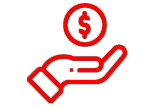If you have an old, damaged, or non-running vehicle taking up space in your driveway, understanding the junk car process can help you turn that eyesore into cash.
Many car owners are unsure about how selling junk car works, but the process is actually straightforward when you know what to expect.
This comprehensive guide will walk you through the junk car selling steps from start to finish.
What Qualifies as a Junk Car?
Before diving into the selling process, it’s important to understand what constitutes a junk car. Generally, vehicles that are considered junk include those that are:
- No longer running or have major mechanical issues
- Damaged beyond economical repair
- Over 10-15 years old with high mileage
- Missing essential parts like engines or transmissions
- Involved in accidents with extensive body damage
- Failing emissions tests repeatedly
Even if your car falls into one of these categories, it still has value in its parts and scrap metal, making it worth selling to junk car buyers.
Step 1: Assess Your Vehicle’s Condition and Value
The first step in the junk car process involves honestly evaluating your vehicle’s condition. Take note of:
- The make, model, year, and mileage
- Overall exterior and interior condition
- Whether the engine runs or has major mechanical problems
- Any valuable parts that might still be functional
- The presence of a clear title
This assessment helps you understand what you’re working with and sets realistic expectations for the selling price.
While junk cars won’t fetch the same prices as running vehicles, you can still receive several hundred to over a thousand dollars depending on the car’s weight, current scrap metal prices, and demand for its parts.
Step 2: Gather Required Documentation
Proper documentation is crucial when learning how selling junk car works. The most important document you’ll need is the vehicle title, which proves ownership.
If you don’t have the title, contact your local DMV to obtain a duplicate. Some states allow you to sell junk cars without titles under specific circumstances, but having proper documentation makes the process much smoother.
Other helpful documents include:
- Vehicle registration
- Maintenance records
- Any receipts for recent repairs or parts
Step 3: Remove Personal Items and Valuable Components
Before selling, thoroughly search your vehicle for personal belongings. Check the glove compartment, under seats, in door pockets, and the trunk. It’s easy to forget items you’ve stored in your car over the years.
You should also consider removing valuable components that might be worth more when sold separately:
- GPS systems or aftermarket stereos
- Custom wheels or tires in good condition
- Catalytic converters (if easily accessible)
- Batteries that still hold a charge
However, be cautious about removing parts yourself if you’re not mechanically inclined, as improper removal could reduce the vehicle’s overall value.
Step 4: Research Potential Buyers
Understanding your options is a key part of the junk car selling steps. You have several types of buyers to consider:
Junk Car Removal Companies : These businesses specialize in purchasing non-running vehicles and often provide free towing. They’re convenient but may offer lower prices since they need to account for removal costs and processing.
Scrap Yards : Local scrap yards purchase vehicles primarily for their metal content. Prices fluctuate based on current scrap metal market rates.
Auto Salvage Yards : These businesses focus on reselling usable parts from junk cars. If your vehicle has valuable components, salvage yards might offer better prices.
Private Buyers : Some individuals purchase junk cars for restoration projects or parts. This option might yield higher prices but requires more effort to find qualified buyers.
Step 5: Get Multiple Quotes
The junk car process becomes more profitable when you shop around for the best offer.
Contact at least three different buyers to compare prices. When requesting quotes, provide accurate information about:
- Vehicle make, model, year, and mileage
- Current condition and any damage
- Whether the car runs or starts
- Your location for towing considerations
Be honest about the vehicle’s condition to avoid surprises that could lower the final offer when the buyer inspects the car.
Step 6: Choose Your Buyer and Schedule Pickup
After comparing offers, select the buyer that provides the best combination of price, convenience, and reliability.
Read reviews and check business credentials before making your final decision. Once you’ve chosen a buyer, schedule a convenient pickup time.
Most reputable junk car buyers offer:
- Free towing services
- Same-day or next-day pickup
- Cash payment on the spot
- Proper documentation handling
Step 7: Complete the Transaction
On pickup day, the buyer will inspect your vehicle to confirm it matches the description you provided. If everything checks out, they’ll present the agreed-upon payment and handle the paperwork.
During this final step of how selling junk car works:
- Verify the buyer’s identification and credentials
- Count the cash payment carefully
- Sign over the title properly
- Remove your license plates (requirements vary by state)
- Cancel your insurance policy
- Notify the DMV of the sale
Step 8: Handle Post-Sale Requirements
After completing the sale, you have a few remaining responsibilities:
- Contact your insurance company to cancel coverage or remove the vehicle from your policy
- Notify your state’s DMV about the sale to avoid future liability
- Keep copies of all transaction documents for your records
Maximizing Your Junk Car’s Value
To get the most money from the junk car selling steps, consider these tips:
- Time your sale when scrap metal prices are higher
- Maintain your vehicle’s title and registration
- Be honest about the car’s condition to build trust with buyers
- Consider parting out extremely valuable components separately
- Get quotes from multiple types of buyers
Common Mistakes to Avoid
Understanding how selling junk car works also means knowing what not to do:
- Don’t accept the first offer without shopping around
- Avoid buyers who won’t provide free towing
- Never sign over your title before receiving payment
- Don’t forget to remove personal items before pickup
- Avoid buyers who seem unprofessional or lack proper credentials
Environmental Benefits of Proper Junk Car Disposal
The junk car process isn’t just about making money – it’s also environmentally responsible. Professional junk car buyers ensure that:
- Hazardous fluids are properly drained and disposed of
- Recyclable metals are processed correctly
- Usable parts are salvaged rather than wasted
- Environmental regulations are followed throughout the process
Conclusion
Understanding the junk car process empowers you to make informed decisions and maximize your return when selling an unwanted vehicle. By following these junk car selling steps – from initial assessment through final documentation – you can efficiently convert your old car into cash while ensuring proper disposal.
The key to success in how selling junk car works lies in preparation, research, and choosing reputable buyers. With the right approach, what seems like a worthless vehicle can provide several hundred dollars or more, making the effort well worth your time.
Remember that the junk car market is competitive, so don’t settle for the first offer you receive. Take time to understand your vehicle’s value, gather proper documentation, and work with established businesses that offer fair prices and professional service.


